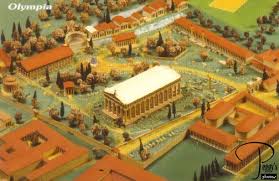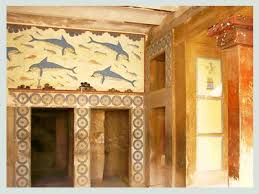archaeological sites
ancient olympia
|
The most important sanctuary of ancient Greece, dedicated to Zeus, the
father of the Gods, and the most important athletic centre. The Olympic games
took place there every 4 years. The earliest finds come from the Neolothic
period (4th millennium BC). It used for the preparation and celebration of the
Olympic Games.
http://odysseus.culture.gr/h/3/eh351.jsp?obj_id=2358 . |
Delphoi
|
The archaeological site of Delphi includes two
sanctuaries, dedicated to Apollo and Athena, the gymnasium, the palaestra and the baths. Further up was
the Castalian spring, the sacred spring of Delphοi, where travelers purified themselves before consulting the oracle.
http://odysseus.culture.gr/h/3/eh351.jsp?obj_id=2507 - |
dodoni
κνοssοσ |
The sanctuary of Dodoni was a major spiritual place in ancient Greece.
It was the oldest of the Greek oracles and ancient people traveled great
distances in order to consult the priests who foretold the future.
http://greeklandscapes.com/greece/dodoni.html |
|
Knossos is the site of the most
important and better known palace of Minoan civilization. According to
tradition, it was the seat of the legendary king Minos. The Palace is also
connected with thrilling legends & myths. The site was continuously
inhabited from the Neolithic period (7000-3000 B.C.) until Roman times.
http://odysseus.culture.gr/h/3/eh351.jsp?obj_id=2369 |
epidaurus |
Epidaurus was built round the 3d
Century BC. It consists of many buildings among which is the ancient Theater that is famous for its perfect
acoustic! Here you can also find the sanctuary of Asclepios, a spiritual place,
a healing and cultural center. Ancient Greeks travelled to the sanctuary to ask
for remedies for their mental, spiritual and physical problems.
http://greeklandscapes.com/greece/epidaurus.html |
vergina
|
Vergina: the ancient first capital of the Kingdom of Macedonia.
In that site the Greek
archeologist M. Andronikos found the
royal tomb of Philip ll , the father of
Alexander the Great.
http://whc.unesco.org/en/list/780 |
mystras
|
Mystras was built around the fortress erected in 1249 by William II prince of Achaia, to protect the area from enemies attacks. The city was abandoned in 1832. Mystras was named, "the wonder of Moreas , i.e., Peloponnese) because of the beauty of its churches, of its libraries and the glory of its writers.
http://whc.unesco.org/en/list/511 |







